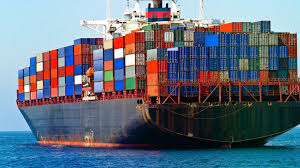VesselsValue in its latest report predicted that orders for bulkers and tankers will gain momentum, while demand for containers and LNG/LPG vessels will decline. Despite the expected rise in bulker and tanker orders, the overall orderbook will likely shrink due to a surge in deliveries for container and gas vessels.
Geopolitical tensions, such as the Houthi attacks in the Bab Al Mandeb Strait, are creating both risks and opportunities for shipping. The rerouting of vessels has supported various shipping segments, but the volatile nature of the conflict introduces significant uncertainty. A sudden halt in attacks could negatively impact shipping, while prolonged disruptions could offer upside potential.
It expects Russian oil exports to continue to decline, with Europe sourcing from suppliers further afield such as the Middle East and Gulf (MEG), US and Latin America, and this will continue to support ton mile demand and therefore rates going forward.
Tanker ordering activity has continued at a relatively strong pace in 2024, already equaling order activity seen in 2023 at 36 mil DWT, levels not rivalled since 2017. The delivery schedule for 2024 is low, however, will gain pace in 2025 and onwards. The total tanker orderbook to fleet ratio, currently at 12%, has been increasing through 2023 and 2024.
A low orderbook and limited supply growth continue to support a fundamentally strong bulker market going forward. Moderate demand growth is expected as interest rates ease in developing economies, investment in green energy accelerates and changing trade flows increase ton-miles.
Bulker values have increased significantly in the last year due to improving sentiment, and despite solid freight rate expectations, the potential upside looks limited due to already elevated levels. Secondhand values are also expected to receive downward pressure from declining newbuilding prices when the ordering activity of container and LNG vessels subside.
Rerouting has been a strong driver of demand growth this year, as longer journeys around the Panama Canal and the Suez Canal have increased sailing distances and ton-miles. The situation in Panama is improving and is expected to normalise in Q4. However, the conflict in the Red Sea remains highly uncertain with no end in sight, and so far this year, bulker transits through Suez have declined 37%.
Additionally, the ongoing war in Ukraine has extended shipping distances, which is expected to keep ton-mile values elevated, as the Western economies’ separation from Russia appears to be a long-term shift.
Despite several stimulus measures initiated by the Chinese government, there has been no sign of improvement in the Chinese real estate sector. This will likely continue taking its toll on the Chinese steel production, as construction activity eases.
With the current conflict in the Red Sea, freight rates have increased sharply and are expected to stay at high levels throughout 2024. Longer sailing distances, congestion at ports and an earlier than expected peak season have increased demand for goods and supply has not managed to keep up with this pace.
Vessel supply growth in our forecast period will at some point outpace demand despite the Red Sea conflict, and this will affect freight rates for all sizes. Net fleet growth was recorded at 5.4% in 2023 which we expect will rise at an average pace of 7.8% between 2024-2027.
It expects LPG production to grow at a more moderate pace than previous years and forecast a growth of 4.4% in 2024, despite a strong 1Q24. Exports out of the US have been strong so far this year, but with less production growth for the remainder of the year and an expected active hurricane season. The VesselsValue forecast anticipates export growth of 7% compared to 13.4% in 2023.
Asian demand for LPG is forecasted to see growth in 2024 for propane dehydrogenation (PDH) plants and domestic consumption. The PDH capacity in China is expected to increase with 7 million tons this year, but with muted operating rates, the report does not expect full utilisation. So far this year, there has been a decline for all petrochemical gases as Asian demand is muted and US exports are seeing difficulties with the ongoing hurricane season. From 1Q25, a new ethylene terminal expansion is expected to go live and boost US ethylene export trade.







